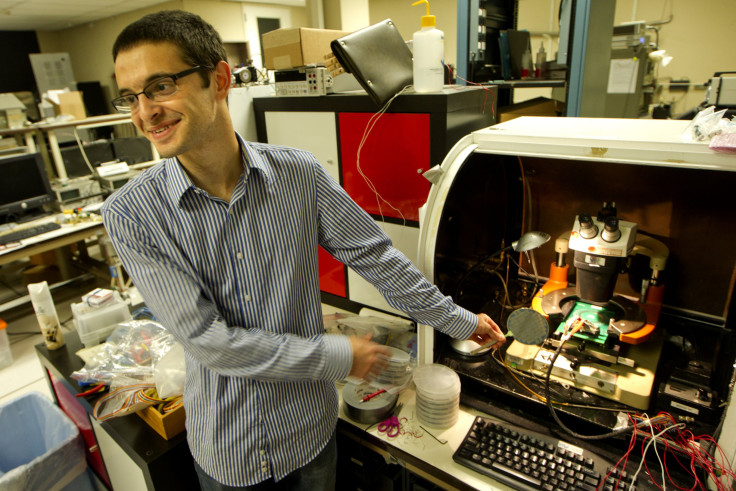Stanford Researchers Create World's First Carbon Nanotube Computer

Researchers at Stanford have successfully created the world’s first computer built entirely from carbon nanotube transistors. The pioneering device may well be the first step to an age of faster, more powerful and more compact computers.
“Carbon nanotubes (CNTs) have long been considered as a potential successor to the silicon transistor,” electronic systems and circuits expert Jan Rabaey said in a press release. "There is no question that this will get the attention of researchers in the semiconductor community and entice them to explore how this technology can lead to smaller, more energy-efficient processors in the next decade.”
In a paper published Wednesday in the journal Nature, Stanford scientists described their creation, a central processing unit composed entirely from 142 carbon nanotube transistors. It’s an incredibly simple computer by modern standards, but it's a fully “Turing complete” computer that's able to run any calculation in the world if given enough time. Also, the carbon nanotube computer is capable of multitasking.
“It can run two programs concurrently, a counting program and a sorting program,” H. S. Philip Wong, a Stanford University electrical engineer, told the New York Times. “We’ve spent a tremendous amount of time on this; in fact we’ve spent two generations of students on this.”
So how exactly will carbon nanotubes herald a future of smaller, faster computers? Our current generation of computers relies on billions of transistors built out of silicon. Over time, scientists have been able to develop smaller and smaller transistors, allowing manufacturers to pack more into computers and increase their speed.
Cutting-edge manufacturers are currently capable of building transistors that measure 22 nanometers, enough to spread 4,000 across the width of a human hair. While researchers are expected to cut sizes down to 5 nanometers by the end of the decade, engineers, eventually, will hit a wall on exactly how small they can make silicon transistors. Silicon simply won’t work at certain sizes.
Enter carbon nanotubes. They’re extremely small tubes, made of microscopic rolls of carbon atoms, usable at much smaller scales than traditional silicon transistors. If researchers can continue to build on Stanford’s blueprints and successfully manufacture carbon nanotubes into working transistors, manufacturers will no longer be bound to silicon as material for transistors. Still, we’re a long way off from carrying around laptops made out of carbon nanotubes.
While Stanford’s carbon nanotube computer may be an impressive feat from an engineering standpoint, it’s hardly up to the standards of current consumer-grade electronics. With only 142 transistors, the carbon nanotube computer can only perform extremely simple tasks in a reasonable amount of time.
“This is a general computer and we can do anything with it,” Max Shulaker, a Stanford graduate student who worked on the program, told the New York Times. “We could in principle run 64-bit Windows, but it would take millions of years.”
Despite its slow speed, Stanford’s carbon nanotube computer is a fantastic proof of concept for the next generation of computers.
"It's not just about the [carbon nanotube] computer. It's about a change in directions that shows you can build something real using nanotechnologies that move beyond silicon and its cousins,” Subhasish Mitra, Stanford electrical engineer and computer scientist, said in a statement.
Subhasish Mitra added, “People have been talking about a new era of carbon nanotube electronics moving beyond silicon, but there have been few demonstrations of complete digital systems using this exciting technology. Here is the proof."
© Copyright IBTimes 2024. All rights reserved.




















